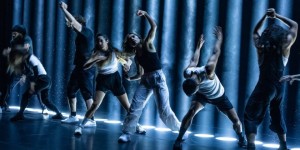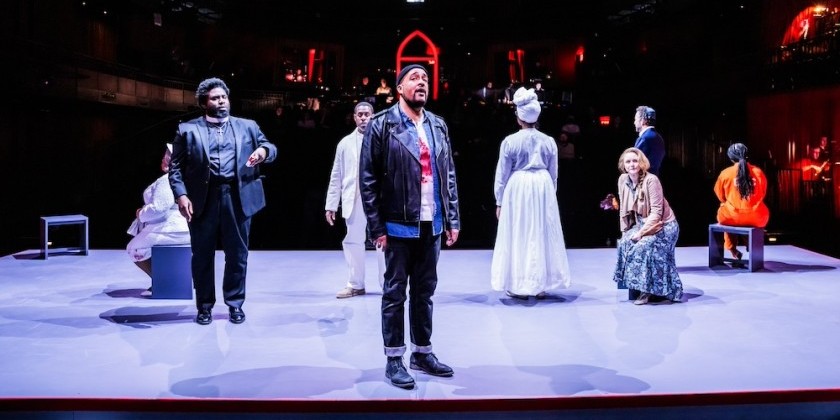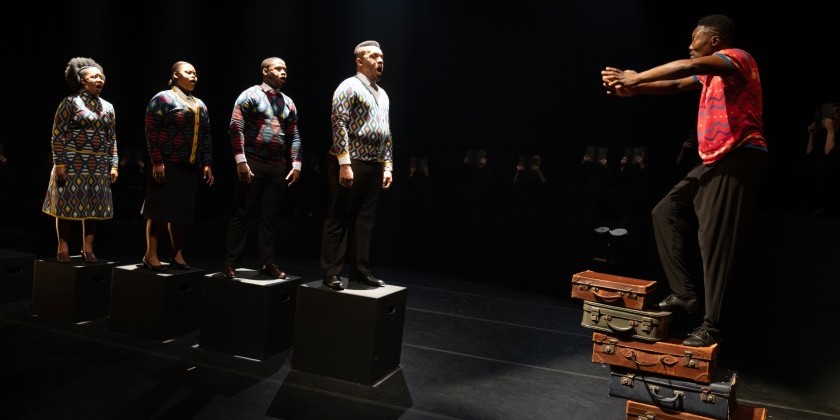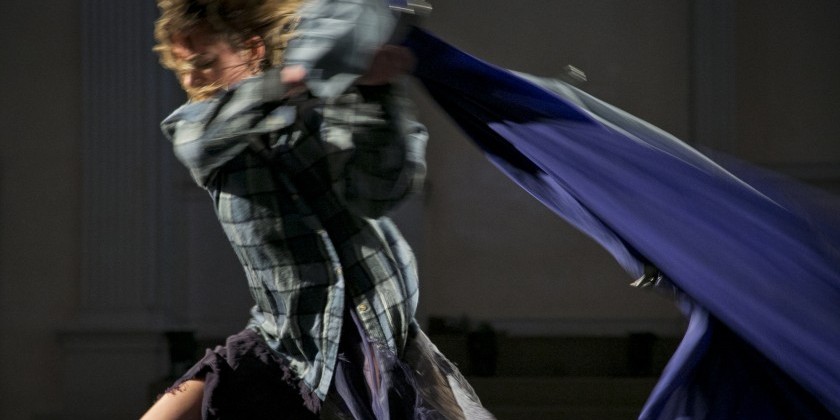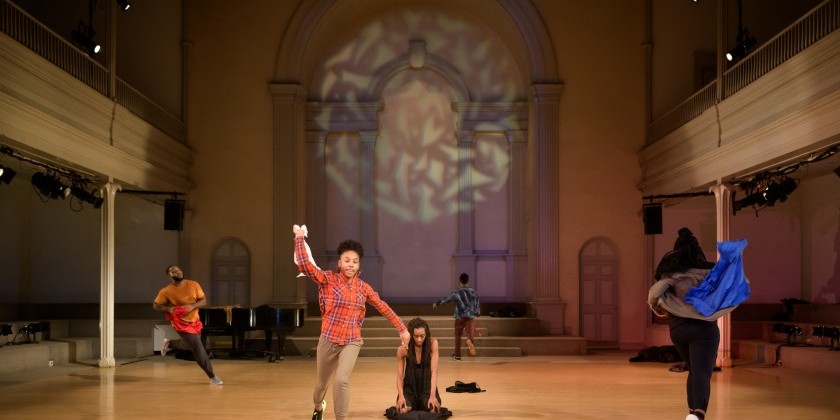Charles Atlas, Rashaun Mitchell, and Silas Riener on the 3-D Dance Film and Performance "Tesseract" at Brooklyn Academy of Music (BAM)

December 13-16, 2017 at 7:30pm; a second December 16 performance is at 2pm
Venue: BAM Harvey Theater
Choreography: Rashaun Mitchell and Silas Riener
3-D video and live video mixing: Charles Atlas
Music: Fennesz and Thomas Arsenault (Mas Ysa) / Lighting design: Davison Scandrett
Tickets start at $25; to purchase tickets go to the BAM website here.
Merce Cunningham once said, “The dance is an art in space and time. The object of the dancer is to obliterate that.”
But what if that dance is taken into another dimension? Filmmaker Charles Atlas and choreographers Rashaun Mitchell and Silas Riener explore the fluidity of time and perception in their upcoming New York premiere, Tesseract. Referring to the four-dimensional geometric image, the work includes a 3-D dance film and blurs the line between video and movement in live performance. The artists, all former Cunningham collaborators, had the opportunity to talk about the two-year process a week before their performances at BAM.
It’s apparent that the three have a rapport and a deep respect for one another’s process even with decades between them. Atlas, who worked with Cunningham on and off for forty years and began filmmaking in 1970, met Mitchell and Riener while they danced for the ensemble in the last years of its existence. When the video artist was commissioned to make a new work — his first dance film in over ten years — by the experimental media and performance venue EMPAC, he invited the two artists to help bring his vision to life. “It was an experiment,” says Atlas. “We really didn’t know how it was going to turn out. But I knew that Silas and Rashaun are problem solvers. It was a long process, but there was an ease to it.”
Luckily, they like one another as Riener playfully jokes, because tedious work had to be done, and, not to mention, there was a steep learning curve. “I certainly discovered that creating dance for video is a very different way to experience time and space,” says Riener describing how film can flatten the look of moving bodies.
They first tackled a 3-D dance film that includes footage of dancers in six distinct otherworldly environments. Its futuristic look was inspired by their combined love for science fiction, which spans from Dune to Blade Runner to “bad pop 3-D blockbusters.” And despite having a great deal of experience, the live section also proved to be tricky for them. For starters, the dancers aren’t the only ones performing live. Atlas is too. The section is captured by multiple cameras, including an onstage Steadicam operated by Ryan Jenkins who deftly weaves among the dancers. Describing the camera as another character, Mitchell also sees it as, “a spiritual medium, a translator of information.”
The videos are then manipulated live by Atlas who projects them on a scrim on stage. “For me it’s like working without a net,” says the filmmaker. “If you make a mistake, there it is on the big screen . . . Because of our background with Merce [whose process welcomed chance encounters], if things go wrong, I try to make something out of it.”

For the dancers, even those as experienced as Mitchell, Riener, and their cohort, it’s incredibly challenging to be aware of all the elements in the work at every moment. Riener describes that exactitude is imperative. Even if a dancer is within two inches from their mark, they run the risk of altering the intended shot. “We’re definitely riding the razor’s edge,” he says.
The three artists attest that their experience with Cunningham primed them for the complex undertaking. “I do think that the ease comes from a shared history,” says Mitchell. “We had something to reference in terms of how we’re communicating and how the piece was shaped.”
Throughout their careers, each has made departures from the Cunningham lineage to develop their own voices. But his impact continues to come in and out of their creative life. “He’s influenced everything I’ve done in terms of the way I think and work,” says Atlas. “I’ve realized it more and more as I progress in my career that I owe a lot to him.”
If the pioneering dance maker were alive today, one would imagine that he’d be awestruck by this project. These artists not only challenge traditional notions of shape and time, but also encourage us to experience the combination of dance and video as electrifying and new.
The Dance Enthusiast Hits The Streets to see what is happening in our dance world, and Create Conversation.
For more Dance Enthusiast Day in the Life pieces, which connect audiences to the behind-the-scenes of dance, click here.





